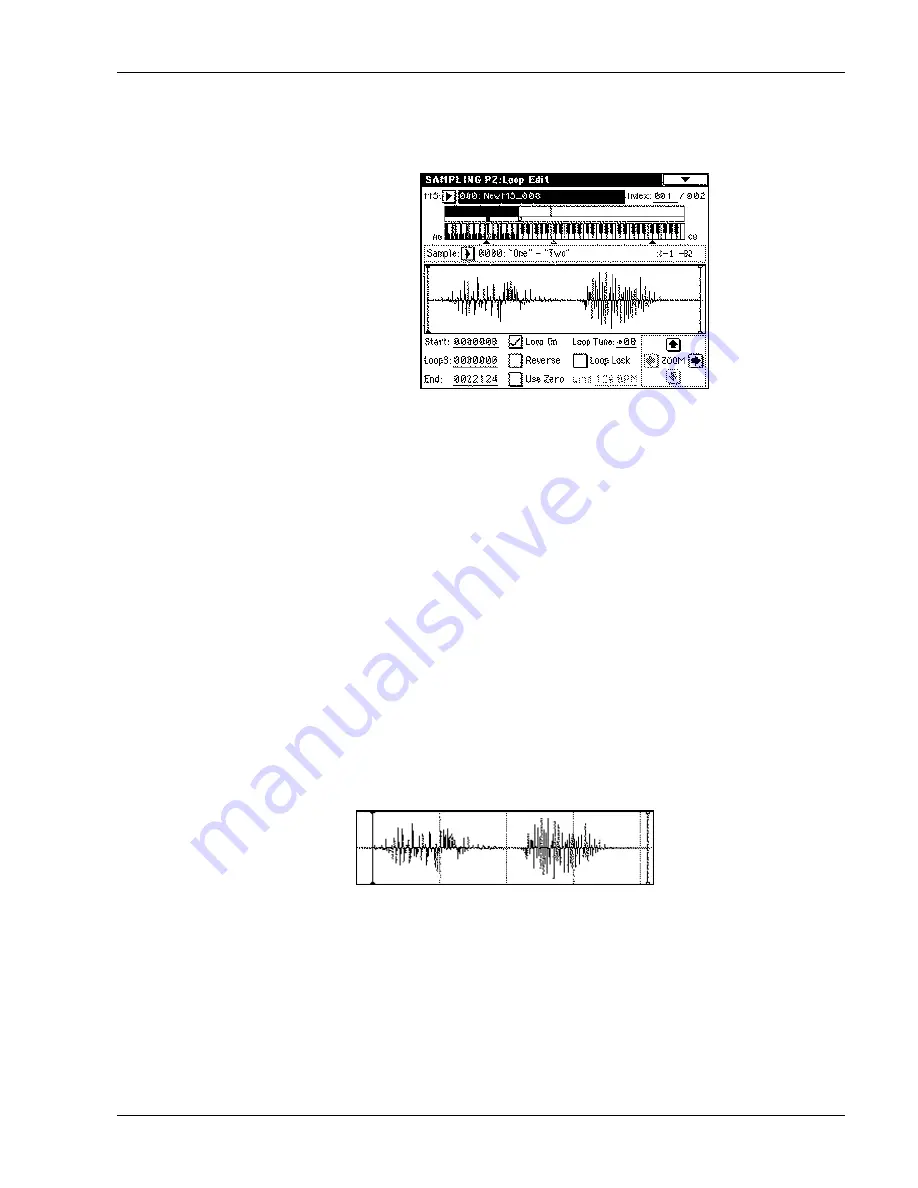
TRITON Training Guide
51
Work with the Loop Edit page:
16. Press the
MENU
key, then press
P2: Loop Edit
. On this page, you can work with the sample length and
set sampling parameter values. Again, in TRITON's display, you'll see the waveform in stereo. Let's
check out a few more functions…
17.
ZOOM
5
5
and
4
4
to see the waveform level and sample address data in greater detail, then trigger the
sample from it's Orig key
C2
.
18. Check out the
Start
,
LoopS
(Loop Start), and
End
points in the lower - left of the display. They're
already set - exactly as the sample was recorded, but you probably need to trim some of the "fat" off the
Loop End point - chances are your loop is not perfect…
19. Press to highlight the
End
value, then, as you continue to hold
C2
and play the loop, rotate the
DIAL
counter - clockwise, slowly, and listen as the loop repeats…having trouble?…Never fear - check this out:
20. Press the
Page menu button
in the upper - right of the display, then press
Grid
. A dialog box appears -
Press the
On
radio button, and for now, leave the
Resolution
set to a
quarter note
value. Finally, press
OK
.
21. The
vertical dotted lines
that now appear across your waveform display represent quarter note
divisions. If you sampled a loop of 4 bars, you'll see 16 divisions across the grid. A loop of 2 bars would
be indicated by 8 divisions, etc.






























